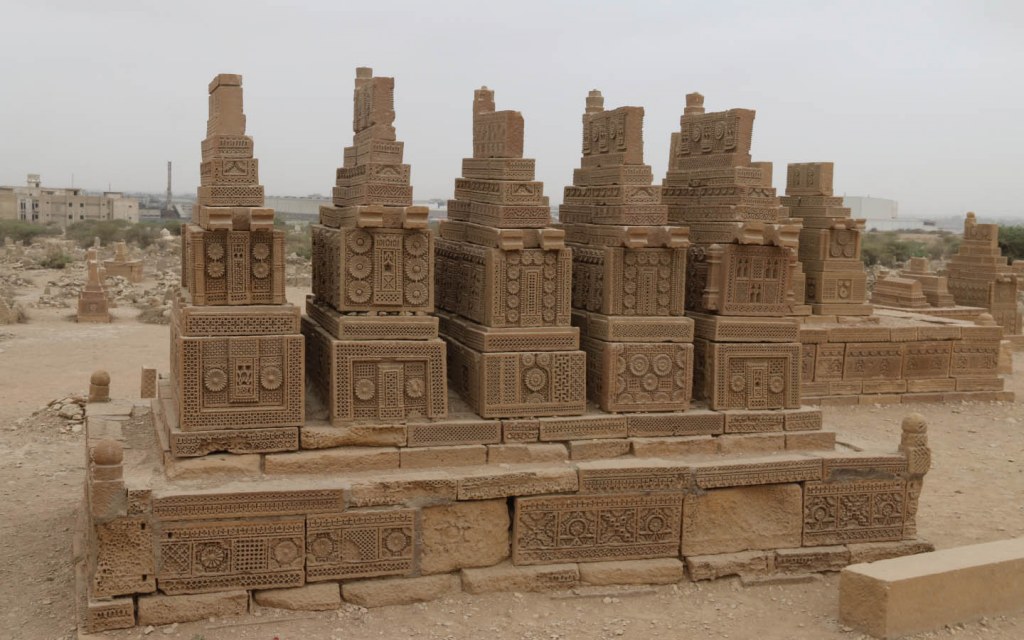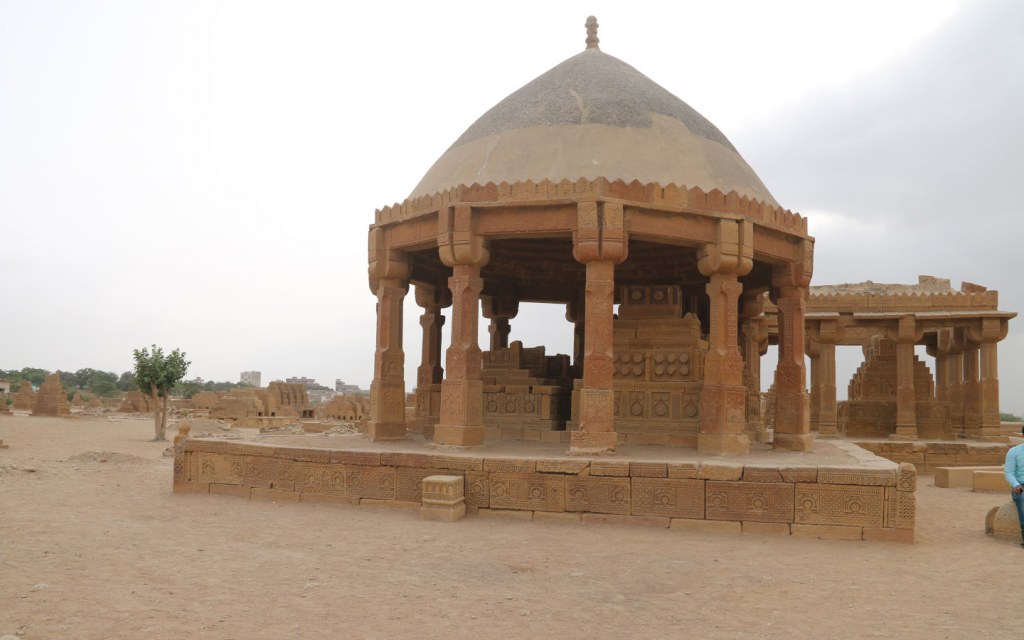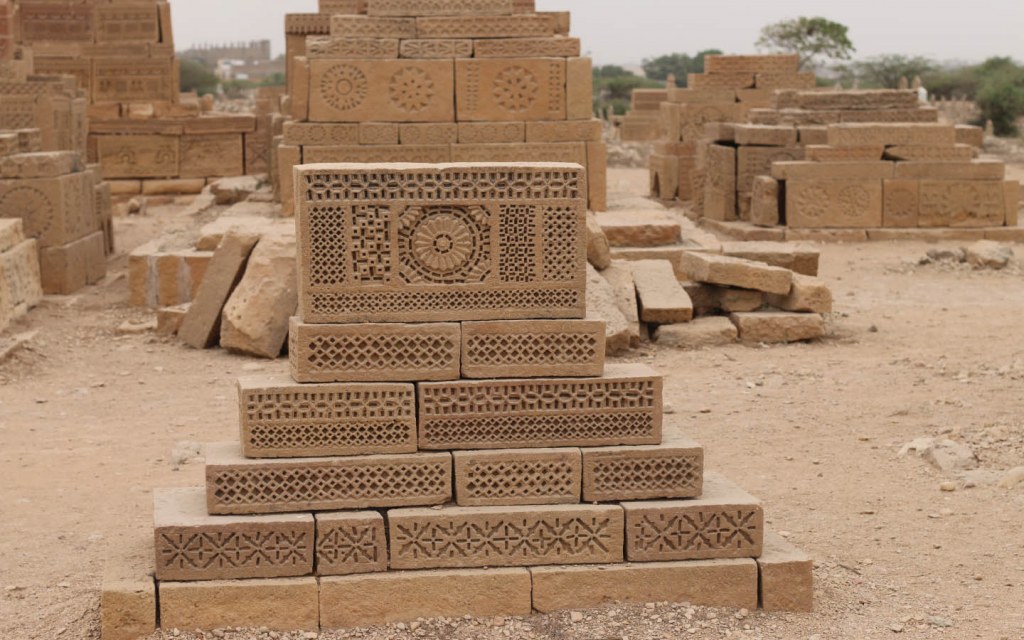Whoever visits Chaukhandi Tombs once can never forget the experience. The memories latch on to you for the rest of your life, but not in a spooky way, of course. The intricate design and magnificent architecture of the cemetery leave an indelible impression on all who visit.
Cited in the tentative list of UNESCO World Heritage Site, this necropolis houses many tombs belonging to the ancestors of a local tribe. The carvings found on these structures are one of Chaukhandi’s most unique features; these are typical of the region of Sindh.
Let us take an in-depth look at the history and architecture of one of the most famous graveyards of Pakistan.
Chaukhandi Tombs – A Tourist Destination

The unmatched beautiful places in Pakistan along with the region’s vibrant culture and rich history are some of the many reasons the country has always been one of the best tourist destinations in the world. Pakistan is known for its vast mountainous landscape in the north, however, there are many historical sites in Sindh that are equally popular among tourists.
The 600-year-old Chaukhandi graveyard is one of these places that welcomes thousands of visitors from across the world every year.
Remarkable Features Of Chaukhandi At A Glance
- Houses tombs of warriors of Baloch families
- 1,160 different designs on over 600 graves
- Constructed between 15th and 18th centuries
- Built in the shape of a pyramid
Meaning Of Chaukhandi

Some historians believe that the word Chaukhandi has two components. According to the Sindhi language, chaw means four and khundi refers to a pillar, so the term basically alludes to an umbrella-like structure supported by 4-8 pillars. Other researchers have a different opinion regarding how the site got its name Chaukhandi.
A case in point: in the necropolis, there is a grave named Jam Murid bin Haji and the word Chaukhandi is inscribed on it along with the name of the deceased. Dr. Kaleemullah Lashari, a post-colonial historian, defines Chaukhandi as ‘a canopy bolstered by four pillars.’ There is no definitive meaning associated with Chaukhandi.
Discovery Of Chaukhandi Tombs
The earliest reference in passing about the Chaukhandi graveyard was given in a letter by J. Macleod, a Scottish historian, which was addressed to Sir Henry Bartle Edward Frere, a British administrator in 1851.
However, these historical graves were brought into limelight by H. D. Baskerville, who was the Assistant Collector of Thatta in Karachi in 1917. In 1922, the site was included in the Ancient Monuments Preservation Act.
Dr. Jean Philippe Vogel was a Dutch epigraphist who was employed with the Archaeological Survey of India from 1901 to 1914. He pointed out that the tombs belonged to Muslims and were Islamic because of the Arab script inscribed on the graves.
Also, the alignment of the tombs was in the direction of Mecca – a practice that’s associated with Muslims only.
After independence, serious studies were undertaken by scholars and historians. Rubbings of these tombs were exhibited internationally which aroused the interest of scholars to study more about the works of Chaukhandi Tombs.
History of Chaukhandi Tombs
One of the most-visited historical places in Karachi, Chaukhandi necropolis is quite popular among historians. It is attributed to the Jokhio tribe. The graveyard was built from 15-18 century during the Mughal rule when Islam was dominant.
Apart from the Jokhio tribe many Baloch tribes having Rajput origins have been buried here. The reflections of the Rajput tribe can be seen in the way the tombs are designed.
The monumental pedestals and slabs in the step-shaped graves and the simple decoration of some tombs, like a human face drawn by a child show Rajput origins. In some tombs, based on Islamic beliefs, there are no human figures.
Architecture And Design Of Chaukhandi Tombs

Chaukhandi Tombs have a unique design – characteristic of Sindhi and Balochi cultures. The graveyard was built with beige-colored sandstone, which has stood the test of times in the arid climate of Sindh. These tombs have been constructed either as single graves or as a cluster of around eight sarcophagi.
A typical casket contains six vertical slabs, with two slabs covering each side of the grave indicative of the body’s length while the remaining two slabs are placed at the head and foot.
The six slabs are sheltered by another sarcophagus comprising six more vertical slabs which are smaller in size, giving the tomb a pyramid-like silhouette.
The upper box is enclosed within five horizontal slabs and is set vertically. The architecture of Chaukhandi Tombs are characteristic of having a carved knob like a crown or turban in the front.
These graves are adorned with designs and motifs, incorporating figures of horsemen, jewelry and hunting scenes. Interestingly, graves of women do not have human figures. Instead, you will see anklets, bracelets and jewelry carved at the front to show that the tomb belongs to a woman. Since the tombs belong to the warriors who upheld the dignity of the tribe during wars, there are swords carved on the sarcophagi belonging to men.
Location Of Chaukhandi Tombs
You can hire a taxi or any ride-hailing app service to reach Chaukhandi graveyard. Situated 29 km east of Karachi, it takes around 40 minutes to reach the site. These ruins are one of the best places to visit in Karachi as they speak volumes of the skillful mastery of the masons at the time.
A word for the wise: Leave before the sun sets, the local people believe that the place is haunted.
So here’s everything you need to know about Chaukhandi Tombs, Karachi. You can also check out some of the other historical buildings in Karachi that you must visit.
If you are a foreigner who has visited the city of lights for the first time, there are plenty of things to do in Karachi in a day. For more updates on tourism, stay tuned to the best travel blog in Pakistan.



